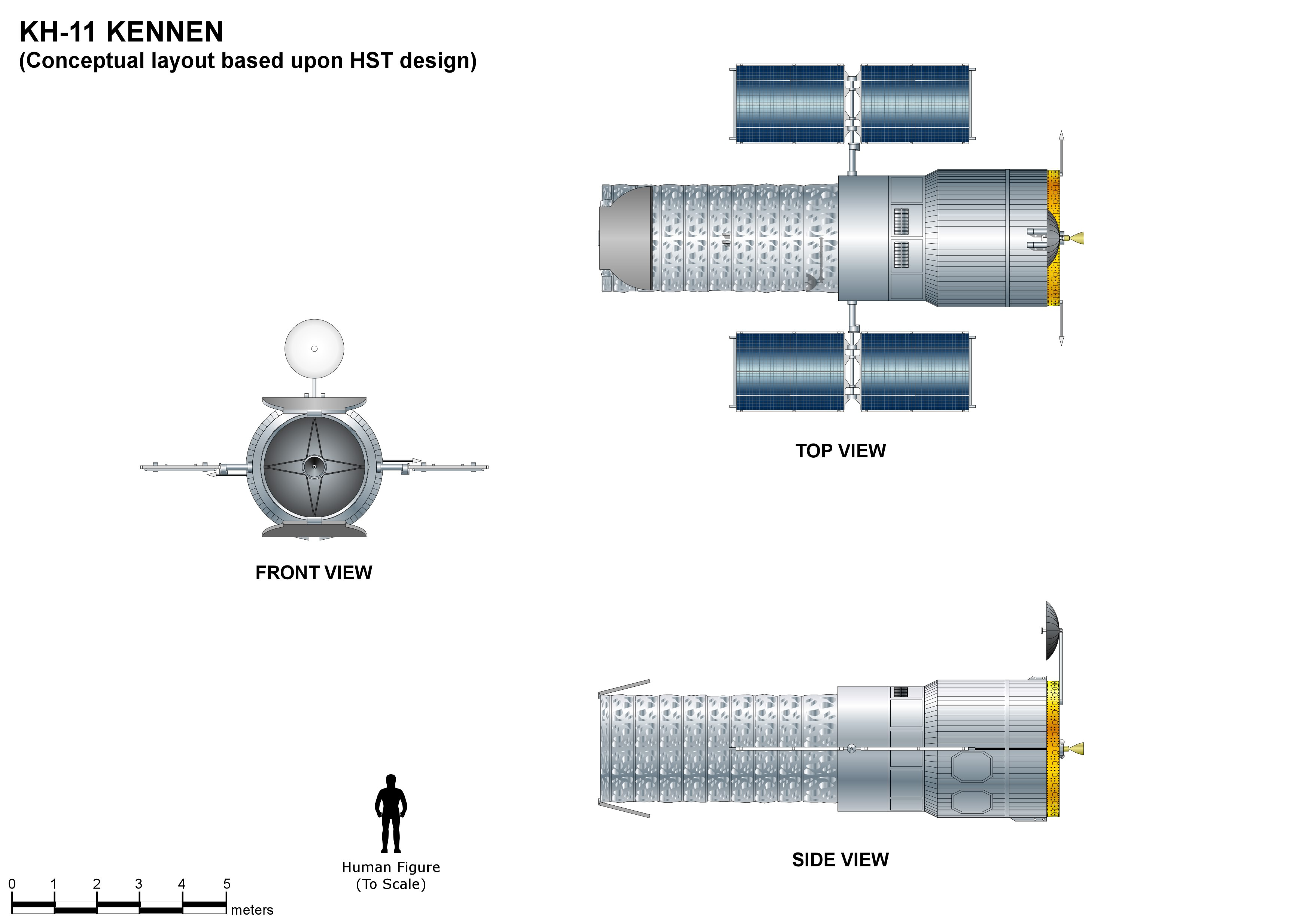|
Three-mirror Anastigmat
A three-mirror anastigmat is an anastigmat telescope built with three curved mirrors, enabling it to minimize all three main optical aberrations – spherical aberration, coma, and astigmatism. This is primarily used to enable wide fields of view, much larger than possible with telescopes with just one or two curved surfaces. A telescope with only one curved mirror, such as a Newtonian telescope, will always have aberrations. If the mirror is spherical, it will suffer from spherical aberration. If the mirror is made parabolic, to correct the spherical aberration, then it must necessarily suffer from coma and off-axis astigmatism. With two curved mirrors, such as the Ritchey–Chrétien telescope, coma can be minimized as well. This allows a larger useful field of view, and the remaining astigmatism is symmetrical around the distorted objects, allowing astrometry across the wide field of view. However, the astigmatism can be reduced by including a third curved optical element. Whe ... [...More Info...] [...Related Items...] OR: [Wikipedia] [Google] [Baidu] |
Applied Optics
''Applied Optics'' is a peer-reviewed scientific journal published by The Optical Society three times a month. It was established in 1962 with John N. Howard as founding editor-in-chief. The journal covers all aspects of optics, photonics, imaging, and sensing. According to the ''Journal Citation Reports'', the journal has a 2021 impact factor The impact factor (IF) or journal impact factor (JIF) of an academic journal is a scientometric index calculated by Clarivate that reflects the yearly mean number of citations of articles published in the last two years in a given journal, as i ... of 1.905. References External links * {{Official website, http://www.osapublishing.org/ao/ Optics journals Optica (society) academic journals English-language journals Publications established in 1962 Journals published between 27 and 51 times per year ... [...More Info...] [...Related Items...] OR: [Wikipedia] [Google] [Baidu] |
DubaiSat-2
DubaiSat-2 ( ar, دبي سات-2) is an electro-optical Earth observation satellite built by the Emirates Institution for Advanced Science and Technology under an agreement with Satrec Initiative, a satellite manufacturing company in South Korea. EIAST's objective with DubaiSat-2 is to provide electro-optical images, that can be commercialized, for users within the United Arab Emirates and beyond and to develop and implement new technologies not used in DubaiSat-1. EIAST also intends to continue manpower training for the UAE's space program. 16 UAE engineers have been working on the design, development, testing and manufacturing of the satellite. The participation of the UAE engineers, who are currently working in South Korea, has increased by 100 percent from the DubaiSat-1 project. Overview The space segment consists of a spacecraft bus and an electro-optical payload. The electro-optical payload is a push-broom camera with Time Delay Integration (TDI) sensors (1 panchromatic a ... [...More Info...] [...Related Items...] OR: [Wikipedia] [Google] [Baidu] |
Deimos-2
Deimos-2 is a Spanish remote sensing Earth observation satellite built for Elecnor Deimos under an agreement with Satrec Initiative, a satellite manufacturing company in South Korea. The Earth observation system was developed by Elecnor Deimos, who managed the engineering, ground segment, integration, tests, launch contract and LEOP, in collaboration with Satrec Initiative, who provided the platform and the payload. The platform is based on DubaiSat-2 launched in 2013, with a larger battery pack intended to last for at least 7 years. The satellite was purchased by Urthecast in 2015, together with Deimos-1 and Deimos Imaging, the division of Elecnor Deimos that was in charge of the operation of both satellites. Deimos-2 is currently property of Deimos Imaging, who operates it and commercialises its data. See also * 2014 in spaceflight In 2014, the maiden flight of the Angara A5, Antares 120 and Antares 130 took place. A total of 92 orbital launches were attempted ... [...More Info...] [...Related Items...] OR: [Wikipedia] [Google] [Baidu] |
Extremely Large Telescope
The Extremely Large Telescope (ELT) is an astronomical observatory currently under construction. When completed, it is planned to be the world's largest optical/near-infrared extremely large telescope. Part of the European Southern Observatory (ESO) agency, it is located on top of Cerro Armazones in the Atacama Desert of northern Chile. The design consists of a reflecting telescope with a segmented primary mirror and a diameter secondary mirror, and will be supported by adaptive optics, eight laser guide star units and multiple large science instruments. The observatory aims to gather 100 million times more light than the human eye, 13 times more light than the largest optical telescopes existing in 2014, and be able to correct for atmospheric distortion. It has around 256 times the light gathering area of the Hubble Space Telescope and, according to the ELT's specifications, would provide images 16 times sharper than those from Hubble. The project was originally called ... [...More Info...] [...Related Items...] OR: [Wikipedia] [Google] [Baidu] |
National Reconnaissance Office
The National Reconnaissance Office (NRO) is a member of the United States Intelligence Community and an agency of the United States Department of Defense which designs, builds, launches, and operates the reconnaissance satellites of the U.S. federal government, and provides satellite intelligence to several government agencies, particularly signals intelligence (SIGINT) to the NSA, imagery intelligence (IMINT) to the NGA, and measurement and signature intelligence (MASINT) to the DIA. NRO is considered, along with the Central Intelligence Agency (CIA), National Security Agency (NSA), Defense Intelligence Agency (DIA), and National Geospatial-Intelligence Agency (NGA), to be one of the "big five" U.S. intelligence agencies. The NRO is headquartered in Chantilly, Virginia, south of the Washington Dulles International Airport. The Director of the NRO reports to both the Director of National Intelligence and the Secretary of Defense. The NRO's federal workforce is a hybrid o ... [...More Info...] [...Related Items...] OR: [Wikipedia] [Google] [Baidu] |
NASA
The National Aeronautics and Space Administration (NASA ) is an independent agency of the US federal government responsible for the civil space program, aeronautics research, and space research. NASA was established in 1958, succeeding the National Advisory Committee for Aeronautics (NACA), to give the U.S. space development effort a distinctly civilian orientation, emphasizing peaceful applications in space science. NASA has since led most American space exploration, including Project Mercury, Project Gemini, the 1968-1972 Apollo Moon landing missions, the Skylab space station, and the Space Shuttle. NASA supports the International Space Station and oversees the development of the Orion spacecraft and the Space Launch System for the crewed lunar Artemis program, Commercial Crew spacecraft, and the planned Lunar Gateway space station. The agency is also responsible for the Launch Services Program, which provides oversight of launch operations and countdown management f ... [...More Info...] [...Related Items...] OR: [Wikipedia] [Google] [Baidu] |
Future Imagery Architecture
Future Imagery Architecture (FIA) was a program awarded to Boeing to design a new generation of optical and Synthetic aperture radar, radar imaging United States, US reconnaissance satellites for the National Reconnaissance Office (NRO). In 2005 NRO director Donald Kerr recommended the project's termination, and the optical component of the program was finally cancelled in September 2005 by Director of National Intelligence John Negroponte. FIA has been called by ''The New York Times'' "perhaps the most spectacular and expensive failure in the 50-year history of United States, American spy satellite projects." Despite the optical component's cancellation, the radar component, known as Topaz, has continued, with four satellites in orbit as of February 2016. History In 1999 the development contract for FIA was awarded to the Boeing company with a budget of US$5 billion for the first 5 years, and a total budget of US$10 billion. A NRO evaluation team estimated that Lockheed Martin ... [...More Info...] [...Related Items...] OR: [Wikipedia] [Google] [Baidu] |
KH-11 Kennen
The KH-11 KENNEN (later renamed CRYSTAL,p.199-200 then Evolved Enhanced CRYSTAL System, and codenamed 1010 and Key Hole) is a type of reconnaissance satellite first launched by the American National Reconnaissance Office (NRO) in December 1976. Manufactured by Lockheed in Sunnyvale, California, the KH-11 was the first American spy satellite to use electro-optical digital imaging, and so offer real-time optical observations. Later KH-11 satellites have been referred to by outside observers as KH-11B or KH-12, and by the names "Advanced KENNEN", "Improved Crystal" and "Ikon". Official budget documents refer to the latest generation of electro-optical satellites as ''Evolved Enhanced CRYSTAL System''. The Key Hole series was officially discontinued in favor of a random numbering scheme after repeated public references to KH-7 GAMBIT, KH-8 GAMBIT 3, KH-9 HEXAGON, and KH-11 KENNEN satellites. The capabilities of the KH-11 are highly classified, as are images they produce. T ... [...More Info...] [...Related Items...] OR: [Wikipedia] [Google] [Baidu] |
Vera C
Vera may refer to: Names *Vera (surname), a surname (including a list of people with the name) *Vera (given name), a given name (including a list of people and fictional characters with the name) **Vera (), archbishop of the archdiocese of Tarragona Places Spain *Vera, AlmerÃa, a municipality in the province of AlmerÃa, Andalusia * Vera de Bidasoa, a municipality in the autonomous community of Navarra *La Vera, a comarca in the province of Cáceres, Extremadura United States *Vera, Illinois, an unincorporated community * Vera, Kansas, a ghost town * Vera, Missouri, an unincorporated community * Vera, Oklahoma, a town *Vera, Texas, an unincorporated community * Vera, Virginia, an unincorporated community *Veradale, Washington, originally known as Vera, CDP Elsewhere *Vera, Santa Fe, a city in the province of Santa Fe, Argentina * Vera Department, an administrative subdivision (departamento) of the province of Santa Fe * Vera, Mato Grosso, Brazil, a municipality * Cape Vera, ... [...More Info...] [...Related Items...] OR: [Wikipedia] [Google] [Baidu] |
Euclid (spacecraft)
Euclid is a visible to near-infrared space telescope currently under development by the European Space Agency (ESA) and the Euclid Consortium. The objective of the Euclid mission is to better understand dark energy and dark matter by accurately measuring the accelerating universe, acceleration of the universe. To achieve this, the Korsch telescope, Korsch-type telescope will measure the shapes of galaxies at varying distances from Earth and investigate the relationship between distance and redshift. Dark energy is generally accepted as contributing to the increased acceleration of the expanding universe, so understanding this relationship will help to refine how physicists and astrophysicists understand it. Euclid's mission advances and complements ESA's Planck telescope, ''Planck'' telescope (2009 to 2013). The mission is named after the ancient Greek mathematician Euclid. Euclid is a medium-class ("M-class") mission and is part of the Cosmic Vision campaign of ESA's European S ... [...More Info...] [...Related Items...] OR: [Wikipedia] [Google] [Baidu] |
James Webb Space Telescope
The James Webb Space Telescope (JWST) is a space telescope which conducts infrared astronomy. As the largest optical telescope in space, its high resolution and sensitivity allow it to view objects too old, distant, or faint for the Hubble Space Telescope. This will enable investigations across many fields of astronomy and cosmology, such as observation of the first stars, the formation of the first galaxies, and detailed atmospheric characterization of potentially habitable exoplanets. The U.S. National Aeronautics and Space Administration (NASA) led JWST's design and development and partnered with two main agencies: the European Space Agency (ESA) and the Canadian Space Agency (CSA). The NASA Goddard Space Flight Center (GSFC) in Maryland managed telescope development, the Space Telescope Science Institute in Baltimore on the Homewood Campus of Johns Hopkins University operates JWST, and the prime contractor was Northrop Grumman. The telescope is named after James E. Webb, ... [...More Info...] [...Related Items...] OR: [Wikipedia] [Google] [Baidu] |




